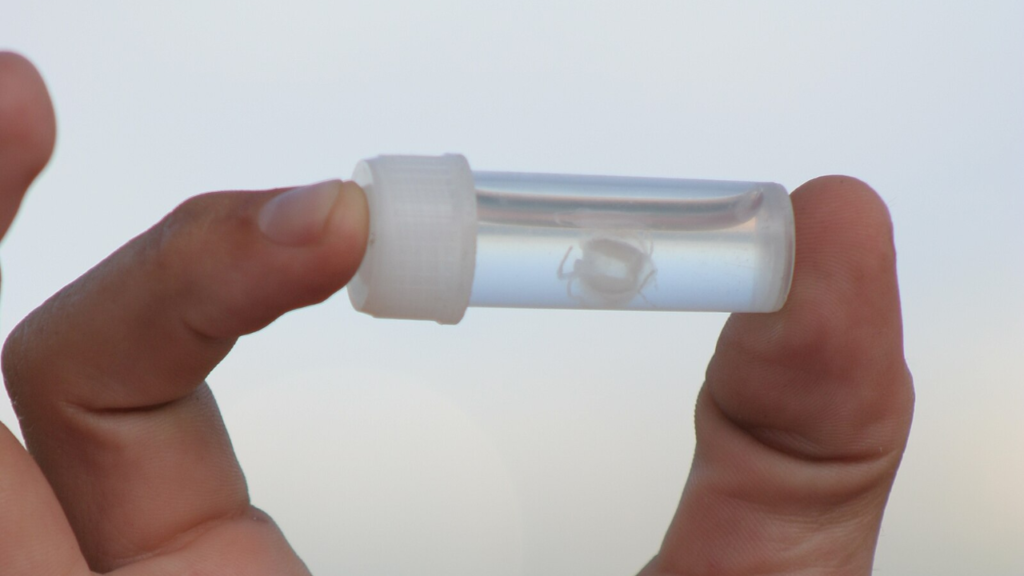Imagine a creature so tiny, you can barely see it, yet its sting can cause unimaginable suffering. The Irukandji jellyfish, found in the waters of northern Australia, is one such animal. Its venom triggers a condition known as Irukandji syndrome, a set of symptoms that can be as mysterious as they are terrifying.
The Jellyfish Is Almost Invisible
The Irukandji jellyfish is a marvel of nature’s stealth. Nearly invisible due to its size and almost-clear body, this tiny terror measures only about 1 cm in diameter. Its small size makes it incredibly hard to spot in the water, increasing the risk of accidental contact. Despite its diminutive stature, the Irukandji packs a powerful punch that belies its size.
The Initial Sting Feels Like Nothing
One of the most deceptive aspects of an Irukandji sting is its initial mildness. The sting itself is only moderately irritating, often described as a mild poke on exposed skin. This lack of immediate pain can lull victims into a false sense of security. Many people don’t even realize they’ve been stung until the more severe symptoms set in later.
Symptoms Are Delayed and Severe
The true horror of Irukandji syndrome lies in its delayed onset. Severe symptoms typically appear 5-120 minutes after the initial sting, with an average delay of about 30 minutes. This delay can be particularly dangerous, as victims may have left the water and be far from help when symptoms begin. The sudden and severe onset of symptoms can catch victims off guard, adding to the distress of the experience.
It Causes a Feeling of Impending Doom
Perhaps the most psychologically disturbing symptom of Irukandji syndrome is the overwhelming sense of impending doom. This feeling is so pronounced that the Irukandji is sometimes called the “doom jellyfish”. Victims often experience intense anxiety and a certainty that they are about to die. This psychological torment adds a unique and terrifying dimension to the physical symptoms of the syndrome.
The Pain Can Be Excruciating
The physical pain associated with Irukandji syndrome can be intense and wide-ranging. Victims often report severe headaches, muscle cramps, and back pain. The pain can be so severe that even strong painkillers provide little relief. This extreme discomfort, combined with the psychological symptoms, can make the experience of Irukandji syndrome truly unbearable.
It Can Cause Heart Problems
One of the most dangerous aspects of Irukandji syndrome is its effect on the heart. The venom can cause a rapid increase in blood pressure and heart rate. In severe cases, it can lead to heart failure. This cardiac stress adds a potentially life-threatening dimension to the syndrome, making prompt medical attention crucial.
The Syndrome Can Last for Days
While the most intense symptoms of Irukandji syndrome typically last for hours, some effects can persist for days or even weeks. Victims may experience lingering fatigue, muscle soreness, and psychological effects. The prolonged nature of these symptoms can have significant impacts on a person’s daily life and well-being.
It’s Difficult to Diagnose
Irukandji syndrome can be challenging to diagnose, especially if the sting wasn’t noticed. The symptoms can mimic other conditions, and without a visible sting site, doctors may initially be puzzled. This difficulty in diagnosis can lead to delays in appropriate treatment, potentially worsening the victim’s condition.
There’s No Specific Antidote
Currently, there is no specific antidote for Irukandji syndrome. Treatment focuses on managing symptoms and supporting the body’s systems as they cope with the venom. This lack of a targeted treatment means that recovery can be a long and uncomfortable process, relying largely on the body’s ability to metabolize and eliminate the toxin.
It Can Be Fatal
While deaths from Irukandji syndrome are rare, they do occur. The condition is potentially lethal, particularly if left untreated or if the victim has underlying health conditions. The risk of death adds a sobering reality to the dangers posed by these tiny jellyfish.
Climate Change May Expand Their Range
As ocean temperatures rise due to climate change, there’s concern that the range of Irukandji jellyfish may expand. This could bring these dangerous creatures into contact with more populated areas and popular tourist destinations. The potential spread of Irukandji jellyfish highlights the far-reaching impacts of climate change on marine ecosystems and human health.
Becky is a fervent wildlife enthusiast and pet care expert with a diploma in canine nutrition. Her love for animals stretches beyond the domestic, embracing the wild tapestry of global fauna. With over a decade of experience in animal welfare, Becky lends her expertise to OutlandishOwl through insightful articles, captivating wildlife information, and invaluable guidance on pet nutrition. Her work embodies a deep commitment to understanding the intricate lives of animals and a passion for educating others on sustaining natural habitats. Becky's hands-on conservation efforts and her knack for translating complex dietary science into practical pet feeding tips make her an indispensable voice for creatures great and small.




